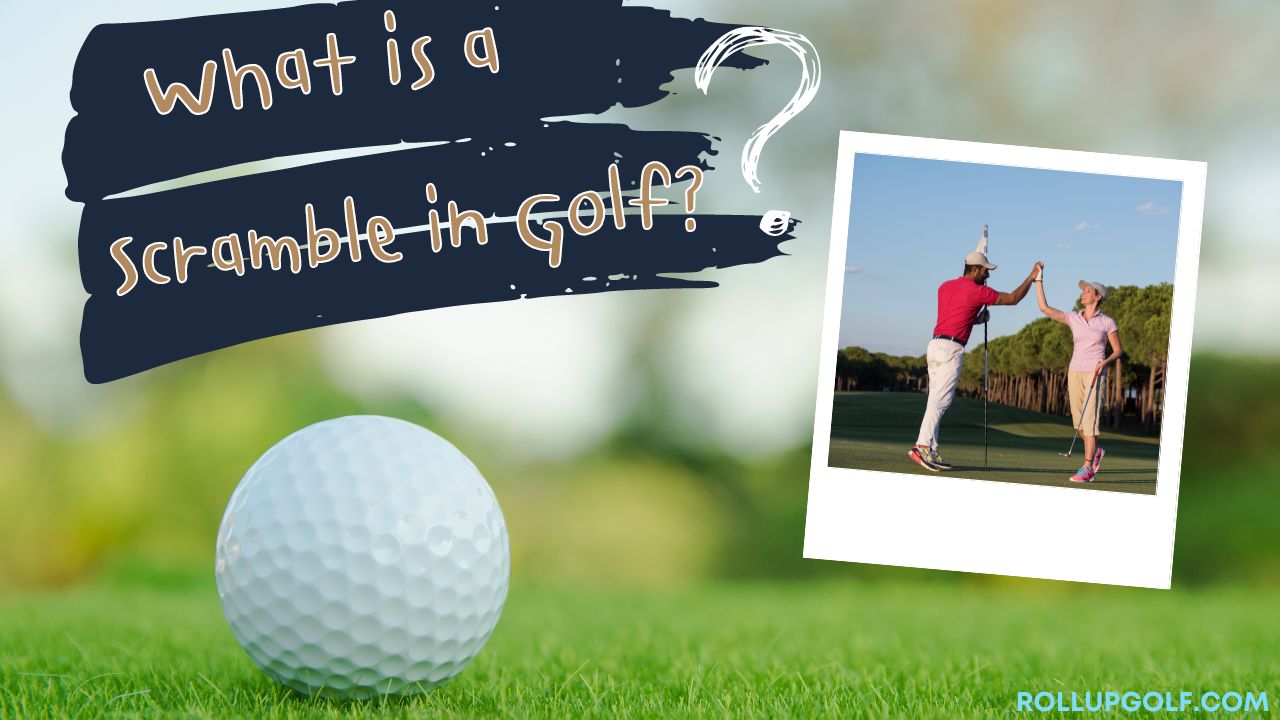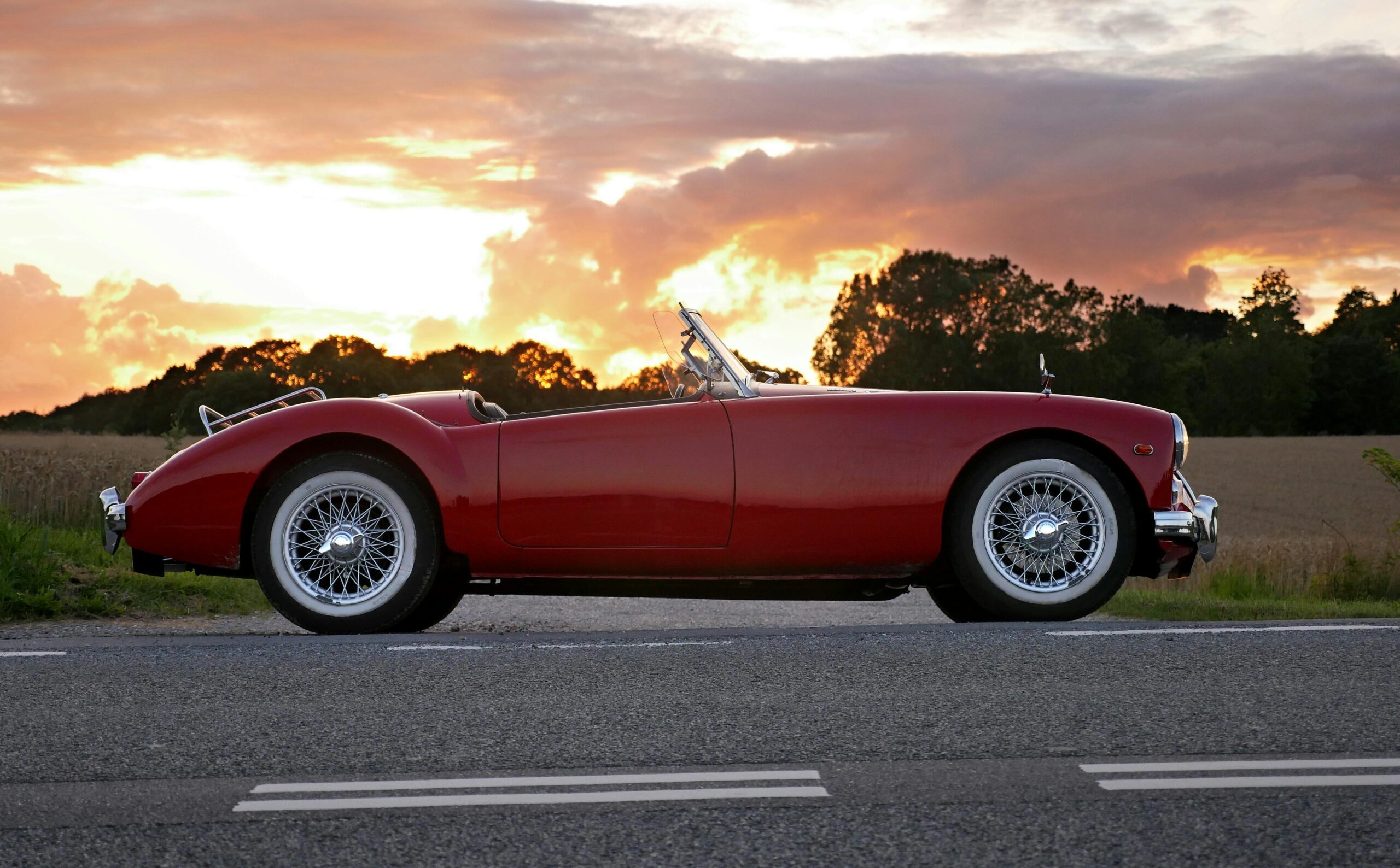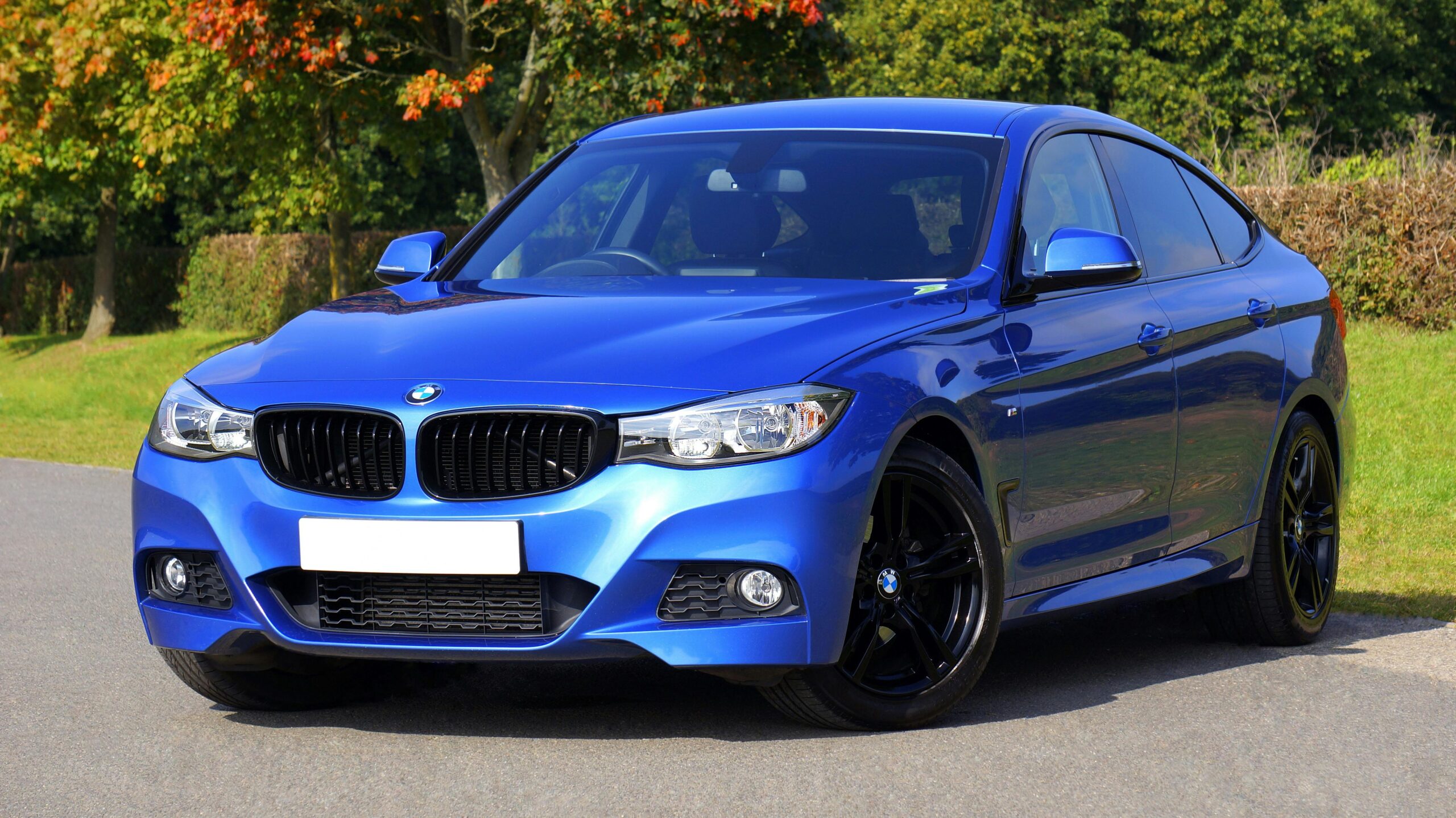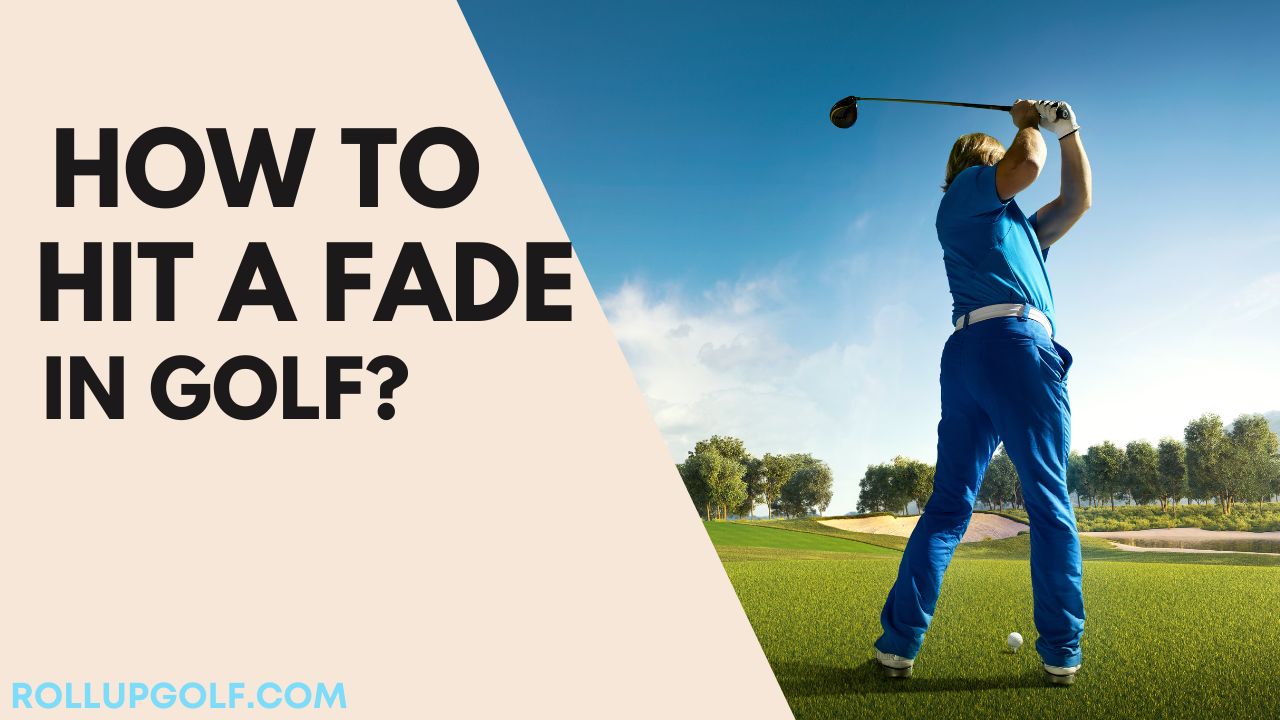
Hitting a fade in golf can be a valuable skill in a golfer’s arsenal, providing the ability to shape shots and navigate around obstacles with precision. Whether you’re a beginner looking to expand your repertoire or a seasoned player aiming for more control over your shots, mastering the fade can significantly enhance your game. In this guide. we’ll explore: How you shoot a fade in golf, how you hit a fade every time, and what Common Mistakes
Understanding the Fade
Before delving into the mechanics of hitting a fade, it’s essential to understand what exactly it entails. A fade is a golf shot that curves gently from left to right (for right-handed golfers) in the air. It differs from a draw, which curves from right to left, and mastering both shot shapes allows golfers to adapt to various course conditions and challenges.
Read also: What is Four-Ball in Golf?
Benefits of Hitting a Fade
The ability to hit a fade offers several advantages on the golf course. Firstly, it provides enhanced accuracy, allowing golfers to precisely target specific landing areas. Additionally, a well-executed fade can be particularly useful in windy conditions, as it offers more control and stability compared to other shot shapes. Furthermore, hitting a fade enables golfers to navigate around obstacles such as trees or hazards strategically.
How do you shoot a fade in golf?
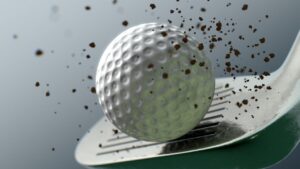
A fade shot in golf is a controlled shot that starts slightly left of the target and curves back to the right before landing. It can be useful for avoiding hazards or shaping shots around doglegs. Here’s how to hit a fade:
Setup
- Aim: Aim your clubface slightly left of your target (right-handed golfer) where you want the ball to start.
- Body: Align your feet, hips, and shoulders even further left than the clubface. This creates an open-face angle relative to your swing path.
Swing
- Swing Path: There are two main approaches. You can either swing slightly outside-in (across your target line) or maintain a more neutral swing path and focus on keeping the clubface open at impact.
- Grip: A slightly weaker grip (less hand rotation) can help promote an open clubface.
Key Points
- Balance: Maintain good weight distribution and balance throughout the swing.
- Practice: Like any golf shot, mastering the fade takes practice. Start at the driving range and experiment with your setup and swing to find what works for you.
Easier Method:
If you’re a beginner or don’t want to make major swing changes, you can try a simpler approach:
- Focus on Setup: Just by aiming your body and clubface left of the target, you can encourage a natural fade as you swing.
Additional Resources:
- Here’s a video that breaks down the fade with a focus on setup for an easier approach: How to HIT A FADE – EASIER Method to Fade a Golf Ball: [YouTube]
- This resource offers a more detailed explanation of swing mechanics for hitting a fade: How to Hit a Fade in Golf with Drivers and Irons
How do you hit a fade every time?

Unfortunately, hitting a perfect fade every single time is a tough feat, even for pros. Golf is a game of feel and many variables can affect your shot. However, here are some things you can do to increase your consistency:
- Focus on Repeatable Setup: Having a consistent setup, particularly with your clubface open relative to your target line, is crucial. Practice aiming and aligning your body for a fade and groove that muscle memory.
- Start Small: Don’t try to hit a massive fade right away. Begin with subtle adjustments and gradually increase the amount of curve as you gain confidence.
- Practice with Different Irons: Fades can feel different with various clubs. Experiment with your wedges, irons, and driver to understand how each one reacts to a fade setup.
- Identify Your Miss: Notice if you tend to over-fade (slice) or not fade enough (push). This will help you fine-tune your swing path or clubface angle during practice.
Here are some additional tips:
- Video Analysis: Record yourself hitting fades and compare it to successful pros. This can help you identify areas for improvement.
- Lessons with a Pro: A qualified golf instructor can personalize your fade technique based on your swing and playing style.
Remember, consistency comes with dedication and practice. Be patient, keep refining your technique, and you’ll see more and more fades finding their target.
Read also: How much are golf cart batteries?
Swing Path and Clubface Position
The key to hitting a fade lies in the swing path and clubface position at impact. Aim to swing the club along an out-to-in path, meaning the clubhead approaches the ball from outside the target line and moves across it through impact. Concurrently, maintain an open clubface relative to the swing path, which promotes the left-to-right spin characteristic of a fade.
Body Positioning
Proper body positioning is fundamental to executing a successful fade shot in golf. The way you position your body before and during the swing greatly influences the trajectory and direction of the ball. Here’s a detailed breakdown of the key elements of body positioning for hitting a fade:
Stance Width and Weight Distribution:
Start by addressing the ball with a shoulder-width stance, ensuring stability and balance throughout the swing. Distribute your weight slightly towards your lead foot (left foot for right-handed golfers) to encourage a downward strike on the ball and promote a consistent swing path.
A common mistake among golfers attempting to hit a fade is an excessive weight shift towards the trail foot (right foot for right-handed golfers), which can lead to a steep angle of attack and an inconsistent ball flight. Focus on maintaining a stable base throughout the swing, with the majority of your weight centered over the ball.
Shoulder Alignment:
Align your shoulders parallel to the target line to reinforce the desired swing path and clubface position at impact. Avoid the temptation to align your shoulders too far to the left (open) or right (closed) of the target, as this can result in misalignment and an inconsistent ball flight.
Proper shoulder alignment promotes a neutral swing path and encourages a smooth, on-plane takeaway. Visualize a straight line extending from your lead shoulder (left shoulder for right-handed golfers) through the target, ensuring that your shoulders remain square throughout the swing.
Hip and Knee Flexion:
Maintain a slight bend in your hips and knees to promote athletic posture and dynamic movement throughout the swing. Avoid locking your knees or hunching over the ball, as this can restrict your range of motion and compromise your ability to generate power and clubhead speed.
Focus on maintaining balance and stability by keeping your lower body engaged and active throughout the swing. A relaxed yet engaged lower body allows for efficient weight transfer and rotational movement, essential components of a consistent and controlled fade shot.
Spine Angle:
Maintain a neutral spine angle at the address, with your back straight and your head positioned directly over the ball. Avoid excessive leaning or tilting in any direction, as this can disrupt your balance and compromise your ability to make a fluid, connected swing.
Visualize a straight line extending from the top of your head through your spine and down to the ground, maintaining this alignment throughout the swing. A neutral spine angle promotes proper weight distribution and encourages a consistent swing plane, essential for executing a successful fade shot.
Incorporating these body positioning fundamentals into your setup and swing mechanics can help you achieve greater consistency and control when hitting a fade in golf. Practice these key elements regularly to develop muscle memory and refine your technique, ultimately enhancing your overall performance on the course.
Executing the Shot
Executing a successful fade requires a combination of technique and mental focus. Begin by visualizing the desired shot shape and target landing area, mentally rehearsing the swing path and clubface position. When addressing the ball, maintain a relaxed grip and smooth tempo throughout the swing, avoiding any unnecessary tension or abrupt movements.
Practice Drills
To refine your fade shot, incorporate specific practice drills into your training regimen. One effective drill involves using alignment sticks to reinforce the correct swing path and clubface alignment. Additionally, the clock face drill can help develop a consistent feel for controlling the amount of fade, with different positions on the clock representing varying degrees of fade.
Common Mistakes
While learning to hit a fade in golf, golfers often encounter certain common mistakes that can hinder their progress and lead to inconsistent ball flight. By identifying and addressing these common errors, you can refine your technique and improve your ability to execute a successful fade shot consistently. Here are some of the most prevalent mistakes to avoid:
Overcompensation with Grip:
One of the most common mistakes when attempting to hit a fade is overcompensating with the grip. Some golfers believe that adjusting their grip excessively to the left (weakening the grip for right-handed golfers) will automatically promote a fade shot. However, this can lead to an overly open clubface at impact, resulting in a slice or a weak, high-ball flight.
Instead of forcing a drastic grip adjustment, focus on maintaining a neutral grip position with your hands positioned comfortably on the club handle. Experiment with subtle grip adjustments to fine-tune your ball flight, gradually increasing or decreasing the degree of fade as needed.
Incorrect Swing Path:
Another frequent mistake when hitting a fade is an incorrect swing path, particularly an overly steep or shallow angle of attack. Golfers may instinctively swing the club too steeply from outside to inside, resulting in a pull or a pull-hook instead of a controlled fade.
To correct this error, focus on swinging the club along a shallower out-to-in path, allowing the club head to approach the ball from slightly outside the target line and move across it through impact. Visualize tracing a shallow arc with the clubhead, maintaining a smooth, connected swing from start to finish.
Lack of Body Rotation:
A common error among golfers attempting to hit a fade is a lack of proper body rotation through the swing. Instead of utilizing the entire body to generate power and control, some golfers rely solely on their arms and hands, leading to inconsistent ball striking and weak shot trajectories.
To address this issue, focus on initiating the downswing with your lower body, allowing your hips and torso to rotate naturally toward the target. Engage your core muscles and maintain a stable lower body as you rotate your upper body through the impact zone, ensuring a synchronized and efficient transfer of energy from the ground up.
Poor Weight Transfer:
Effective weight transfer is essential for generating power and maintaining balance throughout the swing. However, some golfers struggle with poor weight transfer, either shifting their weight too aggressively to the trail foot (right foot for right-handed golfers) or failing to transfer enough weight to the lead foot (left foot for right-handed golfers) at impact.
To improve your weight transfer, focus on starting the downswing with a subtle lateral shift of your hips towards the target, transferring your weight smoothly onto your lead foot as you approach impact. Avoid swaying or sliding laterally, as this can disrupt your balance and compromise your ability to make solid contact with the ball.
Troubleshooting
In the event of encountering slices or inconsistent fades, it’s essential to diagnose the root cause and make necessary adjustments. Experiment with grip pressure and hand position to achieve a more neutral clubface alignment at impact. Additionally, focus on maintaining a balanced swing tempo and rhythm, which can help mitigate excessive side spin.
Advanced Tips
Equipment Considerations
Choosing the right equipment can also influence your ability to hit a fade effectively. Opt for clubs with a slightly more open clubface or higher degree of loft, which can promote a naturally higher ball flight conducive to a fade. Similarly, selecting a golf ball with a lower spin rate can help enhance the desired left-to-right trajectory.
On-Course Strategy
Incorporating the fade shot into your on-course strategy requires careful consideration of when and where to utilize it. Assess the risk-reward dynamics of each shot, weighing the potential benefits of shaping the ball around obstacles against the inherent challenges of executing a precise fade. With practice and experience, you’ll develop a strategic approach to course management that maximizes your scoring opportunities.
Mental Approach
As with any aspect of golf, mastering the fade requires a positive and focused mental approach. Build confidence in your ability to execute the shot through visualization and positive self-talk. Additionally, learned to manage frustration and setbacks effectively, recognizing that the journey to mastering the fade is a gradual process that requires patience and perseverance.
Fitness and Flexibility
Maintaining optimal fitness and flexibility is essential for consistently executing a fade shot. Incorporate exercises that improve rotational mobility and core strength, such as yoga or Pilates. Additionally, focus on flexibility exercises tailored to the golf swing, targeting areas such as the shoulders, hips, and thoracic spine.
The Role of Coaching
Seeking guidance from a qualified golf coach can accelerate your progress in mastering the fade. A coach can provide personalized instruction and feedback tailored to your swing characteristics and learning style. Additionally, explore online resources such as instructional videos and forums, which offer valuable insights and tips from experienced golf professionals.
Famous Faders
Studying the techniques of renowned golfers known for their exceptional fade shots can offer valuable insights and inspiration. Players such as Tiger Woods and Jack Nicklaus are revered for their ability to shape the ball with precision, showcasing the effectiveness of the fade in competitive golf. Analyze their swing mechanics and approach to course management, identifying key principles to incorporate into your own game.
Conclusion
In conclusion, mastering the fade shot in golf is a valuable skill that can significantly enhance your performance on the course. By understanding the fundamentals of setup, swing mechanics, and mental approach, you can develop the consistency and control necessary to execute a successful fade shot. With dedication and practice, you’ll unlock new dimensions of versatility and creativity in your game, ultimately improving your overall enjoyment and satisfaction as a golfer.
FAQs
- How long does it take to learn to hit a fade in golf?
- Learning to hit a fade in golf can vary depending on individual skill level and practice frequency. With dedicated practice and proper instruction, many golfers can begin to incorporate the fade into their game within a few weeks to a few months.
- Can I hit a fade with every club in my bag?
- While it’s possible to hit a fade with any club, some golfers may find certain clubs more conducive to shaping the ball effectively. Experiment with different clubs and swing techniques to determine which combinations work best for you.
- Is it better to fade or draw the ball in certain situations?
- The choice between hitting a fade or draw depends on factors such as course layout, wind conditions, and the golfer’s personal preference and comfort level. Both shot shapes have their advantages and can be utilized strategically depending on the situation.
- Will hitting a fade help me lower my scores?
- Incorporating the fade shot into your repertoire can offer greater versatility and control on the golf course, potentially leading to improved scoring opportunities. However, consistent practice and execution are essential for realizing the benefits of this skill.
- Should I seek professional instruction to learn to hit a fade?
- While it’s possible to learn the basics of hitting a fade through self-study and experimentation, seeking professional instruction from a qualified golf coach can expedite the learning process and help correct any swing flaws or misconceptions.


